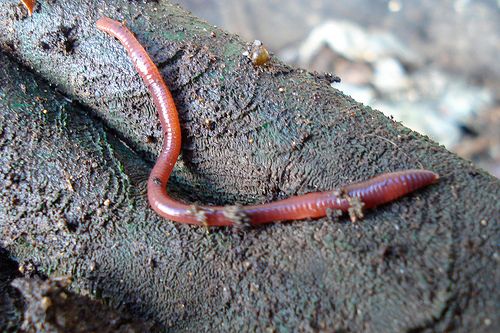Transform Your Lawn with the Expertise of Red Wiggler Express Lawn Care Specialists
Open the Secrets of Red Wigglers: Your Guide to Composting Success
The assimilation of red wigglers into composting practices presents a considerable opportunity for boosting soil health and promoting sustainability. Understanding their needs and habits is essential for enhancing their possibility, from setting up an appropriate worm container to feeding them the appropriate materials.

What Are Red Wigglers?
(Red Wiggler Express)Red wigglers, scientifically known as Eisenia fetida, are a varieties of earthworm mostly utilized in composting because of their amazing capacity to decompose raw material successfully. These worms are defined by their reddish-brown coloration and a fractional body, typically determining in between 3 to 4 inches in size. Unlike various other earthworm species, red wigglers thrive in abundant, natural settings, making them suitable for vermicomposting systems.
Belonging To The United States And copyright, they are frequently discovered in decaying leaves and compost heaps, where they play a critical role in nutrient recycling. Their adjustment to staying in a moist, cardio atmosphere enables them to eat large amounts of natural waste, simplifying right into nutrient-rich castings that improve dirt health.
Red wigglers reproduce rapidly, with a single worm qualified of creating a number of cocoons each week, each containing numerous hatchlings. Understanding the biology and behavior of red wigglers is essential for maximizing their possibility in composting applications.
Advantages of Using Red Wigglers
Utilizing the power of red wigglers in composting provides various benefits that enhance dirt health and wellness and promote sustainable waste monitoring. These remarkable organisms effectively damage down organic matter, transforming kitchen scraps and backyard waste into nutrient-rich vermicompost. This completed item is remarkably useful for plant development, as it improves soil structure, enhances dampness retention, and boosts nutrition availability.

(Lake Hickory Bait)Furthermore, the presence of red wigglers in your composting system can accelerate the composting procedure, producing high-quality compost in a fraction of the time compared to standard techniques. The castings produced by these worms are also brimming with helpful bacteria that additionally enhance the soil ecosystem.
Establishing Your Worm Container
Developing an effective worm bin is a straightforward procedure that can considerably boost your composting efforts. The very first step is selecting an ideal container. Worm containers can be made from plastic storage space containers, wood boxes, or readily readily available worm bins. Ensure the container has appropriate drain and air flow holes to keep optimum wetness degrees and air flow.
Next, prepare the bedding material, which acts as the worms' habitat. A mix of shredded newspaper, cardboard, and coconut coir functions well, providing a comfortable setting for the worms. Goal for a bed linen depth of about 4-6 inches. Dampen the bed linen gently, guaranteeing it resembles a damp sponge without excess water merging near the bottom.

Feeding Your Red Wigglers
To make certain the health and wellness and performance of Red Wiggler Express your red wigglers, it is necessary to supply them with a well balanced diet that satisfies their dietary needs. Red wigglers thrive on a varied variety of organic materials, which not just provide required nutrients but additionally promote effective composting.
Begin by including cooking area scraps such as veggie peels, fruit cores, and coffee premises. Prevent citrus fruits, onions, and garlic, as these can be destructive to worm wellness. Furthermore, introduce shredded paper, cardboard, and completely dry fallen leaves to develop a well-aerated environment.
Feeding regularity ought to be kept an eye on; usually, worms can eat half their body weight in food weekly. It is critical to stay clear of overfeeding, as excess food can bring about undesirable smells and attract insects. A great method is to include food in percentages, enabling worms to refine it before presenting much more.
Preserving dampness degrees is likewise crucial; the bed linens should be moist but not soaked. Last but not least, make sure to on a regular basis inspect the temperature level and pH levels of the bin to ensure an optimum atmosphere for your red wigglers, inevitably boosting their composting performance.
Harvesting and Utilizing Garden Compost
An effective composting process with red wigglers finishes in the rich, dark garden compost called vermicompost, which can significantly improve dirt health and plant growth. Collecting this nutrient-dense material generally takes place every 3 to 6 months, depending upon the dimension of your system and the amount of natural matter being refined.
To gather, delicately different the garden compost from the worms and any type of undecomposed products. One reliable technique entails relocating the materials of the container to one side and including fresh bed linen and food to the vacant area, encouraging the worms to move. After a few days, the garden compost can be collected from the opposite side.
It is important to make use of vermicompost correctly to optimize its advantages. It can be used as a leading dressing for garden beds, combined right into potting dirt, or made into a nutrient-rich fluid fertilizer called "worm tea." This application approach helps to provide essential nutrients straight to plant origins, advertising healthier growth. By including vermicompost into your horticulture regimen, you not only recycle natural waste however likewise develop a successful community that sustains sustainable gardening methods.
Verdict
In recap, red wigglers serve as extraordinary allies in composting initiatives, changing natural waste right into nutrient-rich vermicompost (Red Wiggler Express). Their unique organic characteristics and efficient waste processing capabilities contribute significantly to lasting horticulture practices. By understanding the ideal problems for their environment, feeding requirements, and compost harvesting techniques, garden enthusiasts can boost soil wellness and promote plant vigor. Embracing vermicomposting not only reduces garbage dump waste yet additionally promotes a more eco responsible approach to gardening and resource administration.